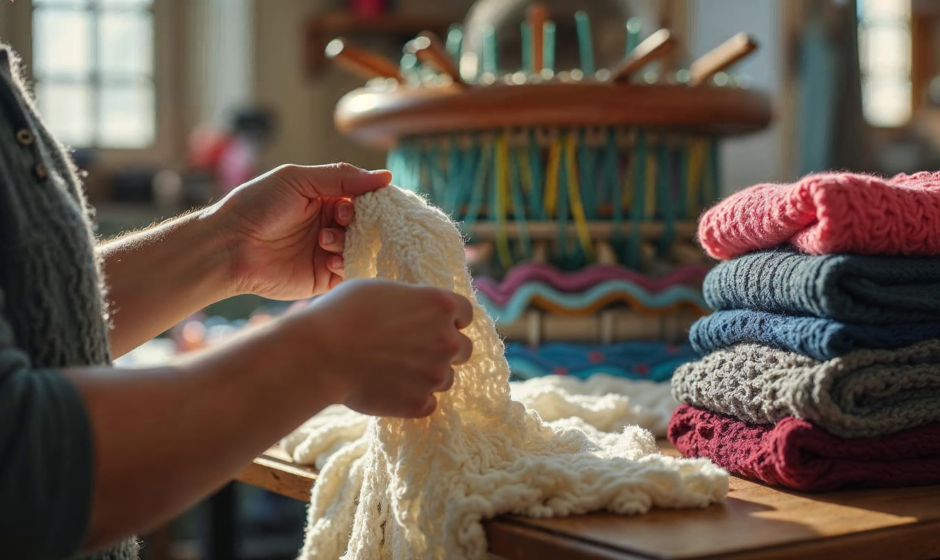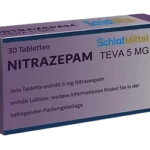Knitting fabric has become an essential part of the fashion industry, known for its flexibility, durability, and comfort. Whether it’s a cozy sweater, a pair of leggings, or a lightweight summer dress, knitting fabric plays a significant role in making garments both functional and stylish. In this blog post, we will explore what knitting fabric is, its benefits, its applications, and how it is produced. By the end, you’ll have a comprehensive understanding of why this versatile material is a popular choice for both manufacturers and consumers alike.
What is Knitting Fabric?
Knitting fabric is created by interlocking yarns using needles, forming a series of loops that stretch and recover. This process differentiates knitting from weaving, where yarns are interlaced. The result is a fabric that is often more elastic and comfortable, ideal for clothing that needs to fit well and move with the body. Knitting fabric can be made from a wide range of materials, including cotton, wool, polyester, and blends, giving it versatility in terms of texture, durability, and breathability.
Types of Knitting Fabric
1. Weft Knitted Fabrics
Weft knitting is the most common type of knitting fabric, and it involves creating rows of loops that run across the width of the fabric. These fabrics are typically softer and stretchier than others, making them ideal for items like t-shirts, dresses, and leggings.
2. Warp Knitted Fabrics
In warp knitting, the yarn is knitted vertically, and the loops are interconnected in a zigzag pattern. These fabrics are known for being more durable and less stretchy than weft knits. Warp knitted fabrics are commonly used in athletic wear, lingerie, and certain types of outerwear.
3. Ribbed Knitting
Ribbed knitting features alternating knit and purl stitches, creating a fabric with raised, vertical lines. This type of knit is often used in cuffs, neckbands, and waistbands to provide extra elasticity and shape retention.
4. Interlock Knits
Interlock knitting is a variation of the ribbed knit, where two layers of fabric are interwoven, creating a thicker, more stable material. This type of fabric is commonly used for high-quality t-shirts and dresses due to its smooth texture and durability.
Benefits of Knitting Fabric
Knitting fabric offers numerous advantages that make it an attractive choice for both designers and consumers:
-
Stretch and Comfort: The interlocking loops allow knitting fabric to stretch, providing excellent comfort and fit, especially in garments that require movement, like activewear.
-
Breathability: Knitted fabrics, especially those made from natural fibers like cotton and wool, allow air to circulate, making them breathable and ideal for warmer weather.
-
Durability: Knitting fabric is generally more durable than woven fabric due to its inherent flexibility and the way it handles stress and strain.
-
Versatility: Knitted fabrics can be used in a variety of garments, including casual wear, activewear, and formal wear. The material can also be manipulated to create different textures and patterns.
Applications of Knitting Fabric in Clothing
1. Casual and Everyday Wear
Knitted fabrics are widely used for casual clothing due to their softness, comfort, and stretchability. T-shirts, sweatshirts, leggings, and activewear all benefit from the stretchy nature of knitted fabric, which provides ease of movement and comfort throughout the day.
2. Sportswear and Activewear
One of the primary uses for knitted fabric is in sportswear. The fabric’s ability to stretch, wick moisture, and maintain comfort over long periods makes it ideal for yoga pants, gym wear, and outdoor activities. The combination of elasticity and breathability is a major selling point for activewear brands.
3. Luxury Fabrics
High-end knitted fabrics, like cashmere and fine wool, are used in luxury fashion. Their softness, warmth, and stretchability make them desirable for high-quality sweaters, cardigans, and outerwear.
4. Children’s Clothing
Knitted fabrics are often used in children’s clothing because of their softness and comfort. From baby onesies to stretchable pants, knitted fabrics allow for movement, making them perfect for growing kids.
5. Medical and Compression Garments
Compression garments, such as socks, sleeves, and medical stockings, are made from knitted fabrics due to their ability to stretch and provide the necessary pressure for therapeutic benefits. This makes knitted fabrics a vital material in the medical and healthcare sectors.
Trends in Knitting Fabric Production
1. Sustainability
As the fashion industry moves toward more sustainable practices, the use of eco-friendly fibers in knitted fabrics is on the rise. Many manufacturers are using organic cotton, bamboo, and recycled fibers to reduce environmental impact. This trend is reflected in the growing demand for knitted fabrics that are not only comfortable but also environmentally responsible.
2. Smart Fabrics
Smart knitting fabrics that incorporate technology are becoming more popular. These fabrics can have sensors embedded in them to monitor health parameters or change color in response to environmental conditions. The intersection of textile and technology is opening up new possibilities for functional garments.
3. 3D Knitting
3D knitting is a technique that creates garments without seams, allowing for designs that are more complex and intricate. This method reduces waste and allows for highly customized products. Designers and manufacturers are increasingly exploring 3D knitting for its efficiency and innovation.
Challenges in Knitting Fabric Production
1. Complexity in Manufacturing
While knitting fabric offers many advantages, the process of producing knitted fabrics can be more complex than weaving. It requires specialized machinery and skilled workers to ensure quality and precision in production. This can lead to higher manufacturing costs, especially for intricate designs.
2. Fabric Shrinkage
Certain knitted fabrics, particularly those made from natural fibers, are prone to shrinkage after washing. This can lead to challenges for consumers and manufacturers alike, as shrinkage may affect the fit and durability of garments. Manufacturers must ensure that fabrics are pre-shrunk or treated to prevent significant shrinkage.
3. Maintenance and Care
Knitted fabrics often require more delicate care than woven fabrics. They may need to be hand-washed or dried flat to prevent stretching or distortion. This can be a disadvantage for consumers who prefer low-maintenance clothing.
The Future of Knitting Fabric
As the demand for functional, sustainable, and comfortable clothing continues to rise, the future of knitting fabric looks promising. Innovations such as smart fabrics and 3D knitting will continue to push the boundaries of what is possible in garment design and manufacturing. Additionally, the increasing focus on sustainability will lead to more eco-friendly options for consumers who are mindful of their environmental impact.
Conclusion
Knitting fabric’s versatility, comfort, and durability have made it an essential material in the fashion industry. From casual wear to luxury items, its ability to stretch and breathe while maintaining shape makes it an ideal choice for a wide range of applications. As sustainability and innovation continue to shape the industry, knitting fabric will remain a popular option for both designers and consumers alike.
If you’re seeking high-quality knitted fabrics for your garment production needs, Moonlight Fabric offers an extensive range of textile options designed to meet the needs of manufacturers and designers alike. Whether you’re based in Pakistan, Karachi, or beyond, Moonlight Fabric is dedicated to providing top-tier products that align with the latest trends and quality standards.


